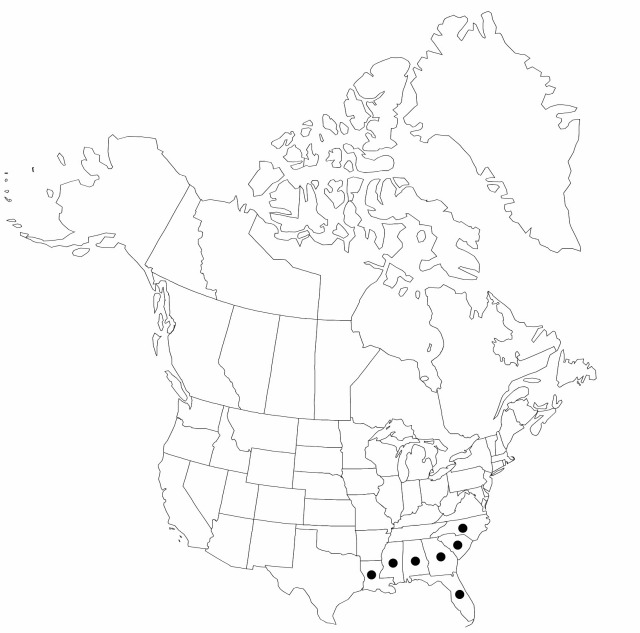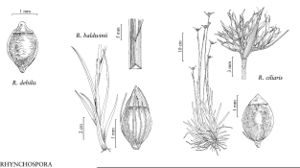Rhynchospora ciliaris
Contr. U.S. Natl. Herb. 6: 408. 1901.
Plants perennial, cespitose, 30–90 cm; rhizomes absent. Culms erect or ascending, terete to obscurely trigonous, multiribbed, densely leafybased, slender, stiff, papillose to scabridpuberulent. Leaves forming strong rosette, distal widely spaced, much exceeded by scape; basal leaf blades shortlinear, flat, 4–6 mm wide, culm leaf blades narrower, longer, all ciliate, apex bluntly acute. Inflorescences terminal; spikelet cluster 1, crowded, hemispheric, often lobed, to 2 cm wide; bracts strongly ciliate distally; longer leafy bracts exceeding cluster. Spikelets dark redbrown, ovoid, 4–5(–6) mm, apex acute; fertile scales broadly ovate, 4–4.5 mm, apex blunt, sometimes apiculate or with mucro to 1 mm, midrib scabrid. Flowers: bristles 6, some vestigial, none reaching past fruit midbody, antrorsely barbellate. Fruits 1–2 per spikelet, (1.9–)2–2.5 mm; body dark brown with paler center, lenticular, broadly ellipsoid to orbicular, 1.6–2 × 1.5–1.6 mm, margins flowing to tubercle; tubercle lowtriangular, 0.5 mm, often apiculate.
Phenology: Fruiting late spring–fall.
Habitat: Sands and peats in bogs, seeps, depressions in savannas, and low open pinelands
Elevation: 0–100 m
Distribution

Ala., Fla., Ga., La., Miss., N.C., S.C.
Discussion
Selected References
None.
